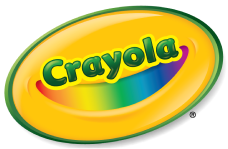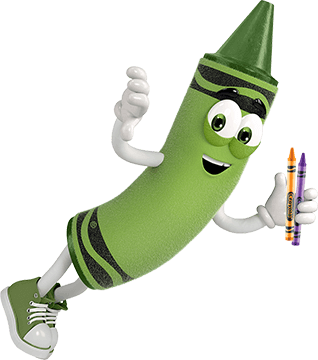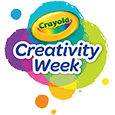Crayola tiene 800,000 pies cuadrados de espacio de fabricación y almacenamiento en Lehigh Valley. El área de fabricación de crayones es de 54,000 pies cuadrados en el área de empaque de crayones y de 34,000 pies cuadrados en el área de moldeo y etiquetado. Las instalaciones de Forks I, que albergan el área de fabricación de crayones, tienen 460,000 pies cuadrados de espacio.
Si tienes preguntas adicionales, ¡nos encantaría saber de ti! No dudes en llamarnos o enviarnos un mensaje de texto al 1-800-CRAYOLA días laborables entre las 9 AM y las 4 PM hora del Este. Si prefieres enviarnos un correo electrónico, visita nuestra página de contacto.
Preguntas relacionadas
Explora respuestas a preguntas comunes, consejos útiles para eliminar manchas e ideas creativas para aprovechar al máximo nuestros materiales de arte y recursos gratuitos.
-
Crayola uses two types of label adhesives, water-based and hot melt. To remove Crayola crayon labels, first try soaking the crayons in warm soapy water for a few minutes. Rinse and dry the crayons before using. If this method is unsuccessful, an adult can peel the label off by hand and use a dull knife to scrape off any remaining paper.
-
What are skin tones?
Your skin tone is the genetic amount of melanin, naturally occurring dark brown or black pigments, in the outermost layer of your skin. Skin tones can change over time for various reasons.
What is your skin tone?
There are 3 traditional skin tones: Light, Medium, and Deep.
- Light or fair skin tone: Contains a small amount of melanin within the skin.
- Medium skin tone: Contains a fair amount of melanin within the skin, is a neutral color, and has a beige appearance. This skin tone is often referred to as an “olive” color.
- Deep skin tone: Contains a large amount of melanin within the skin.
What are undertones?
Undertones are the natural colors underneath the surface of your skin. Because undertones are under the surface of the skin, you can have the same skin tone as another person, but have a completely different undertone. Undertones are not based on skin tone. For instance, a light skin tone can have a warm undertone and a deep skin tone can have a cool undertone. Also, undertones remain the same, even when you tan. There are 3 traditional undertones: Rose, Almond, and Golden.
- Pink, blue, and/or red hues under the skin = Rose, pink, or cool undertone
- A mixture of warm and cool hues typically the same color as your skin tone = Almond, neutral, or olive undertone
- Peach, yellow, and/or gold hues under the skin = Golden or warm undertone
What is your undertone?
You can identify your undertone by using the color of your veins. In natural light, what color are the veins under your skin on the inside of your arm or wrist?
- Blue and/or purple veins = Rose or cool undertone
- Colorless, same color as your skin, and/or a combination of blue and green veins = Almond or neutral undertone
- Green and/or olive veins = Golden or warm undertone
Tips for selecting your Crayola® Colors of the World® skin tone crayon color:
- Check out the color panels on the side of the Colors of the World crayon box.
- Match: Use crayon box color panels or create color swatches.
- Select: Pick colors closest to your skin tone.
- Color: Draw your #TrueSelfie with your unique colors!
Another way to find your skin tone crayon is to color a small area on a piece of paper with the crayon colors closest to your skin tone. Compare the areas with the inside of your arm or wrist and select the crayon color that best matches your skin tone.
-
Crayola® Model Magic®, whether still wet (as sold) or dried, may be disposed of as household waste. There are no known restrictions for its transportation or disposal. Typical curbside-pickup household waste systems may be used for environmentally safe disposal.
-
Crayola® Air-Dry Clay, whether wet (as sold) or dried, may be disposed of as household waste. There are no known restrictions for its transportation or disposal. Typical curbside household waste systems may be used for environmentally safe disposal.
-
As we deepen our commitment to sustainability, we're researching what programs will make the most significant impact and help us advance our sustainability goals, like our commitment to significantly reduce emissions from our business operations by 2030.
We have already taken several steps to make our products and operations more sustainable by focusing our efforts on renewable energy and packaging initiatives.
- Renewable Energy: The 20-acre solar farm on our Crayola campus in Pennsylvania provides the electricity to make 1 billion crayons, 700 million markers a year, and 120 million jars of paint.
- Plastics Reduction: In the last 10 years, we've redesigned our broad line markers to save an estimated 2 million pounds of plastic versus its previous design.
- Packaging: We make our marker Classpack packaging with 100% recycled cardboard. Starting in 2023, this packaging, along with crayon sleeves, will be made with natural cardboard instead of bleached cardboard, which will reduce C02e emissions by an estimated 100 metric tons per year.
- Carbon Footprint: Crayola, through our parent company Hallmark, joined the Science Based Target initiative, a collaboration of global nonprofit organizations, businesses, and world governments that set goals to limit global warming to not exceed 1.5°C. To achieve this, participating organizations will need to reduce carbon emissions significantly by 2030. Crayola sources raw materials locally and manufactures many crayons and markers close to where they are used, which helps reduce the carbon footprint. In fact, Crayola has reduced CO2e emissions from our company-owned facilities' direct and indirect energy sources by 82% since 2019, with investments in renewable energy, as well as efficiencies in our US manufacturing process. (Direct energy includes the gasoline, oil, natural gas, etc. used while indirect emissions are created when the energy is produced but not where it is used.)
- Reforestation: Most Crayola colored pencils are made from wood that is reforested in an 8,288 hectare pine farm in Brazil. Each year 300,000 seedlings are planted to restore the forest.
For more information on Crayola sustainability efforts, check Crayola's Sustainability Page.




